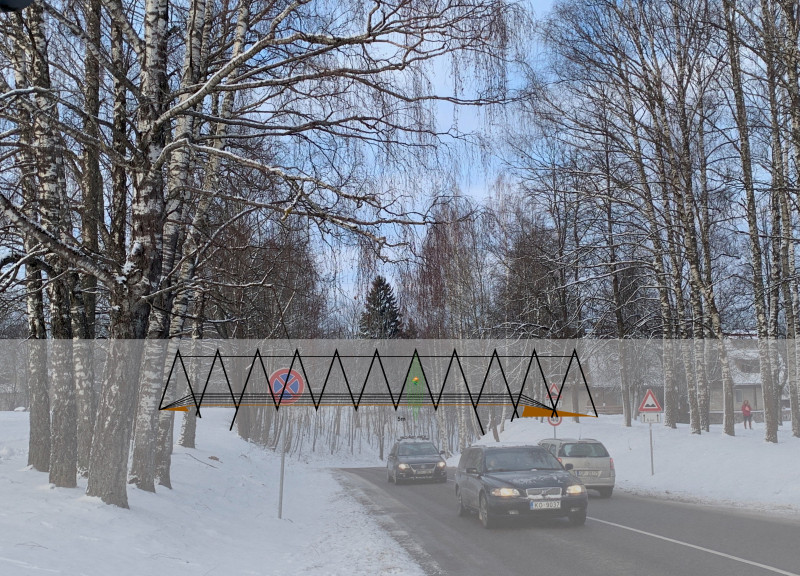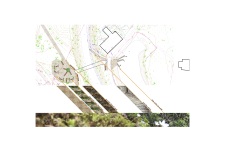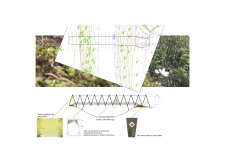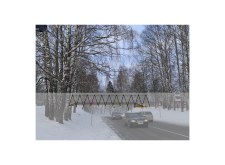5 key facts about this project
Innovative Material Use and Sustainable Integration
A notable aspect of this project's design is its thoughtful selection of materials. The use of various types of plywood provides structural integrity and visual warmth, while color-coated steel elements reflect the rust of decaying trees, establishing a connection with the surrounding environment. Transparent glass panels enhance spatial continuity and integrate views of the forest, fostering a sense of immersion. Natural stone pathways serve as grounding elements, promoting sustainable practices by utilizing local resources. This combination of materials not only fulfills functional requirements but also aligns with the project's ecological ethos.
Engagement with Natural Environment and Community
The project’s layout includes raised wooden platforms that accommodate different elevations, allowing for diverse viewing experiences. Seating areas are strategically placed to encourage contemplation and interaction with the forest landscape. This design fosters a deeper understanding of ecological relationships and community connection to forest conservation. Unique design approaches, such as integrating lighting fixtures that mimic leaf patterns, enhance the atmosphere during nighttime, ensuring the area is both accessible and inviting. By focusing on the hidden beauty of dead and dying trees, the project challenges traditional perceptions of natural beauty, highlighting the importance of all life stages within forest ecosystems.
To gain further insights into the design's technical aspects, including architectural plans, architectural sections, and architectural ideas, readers are encouraged to explore the project presentation for detailed information.


























